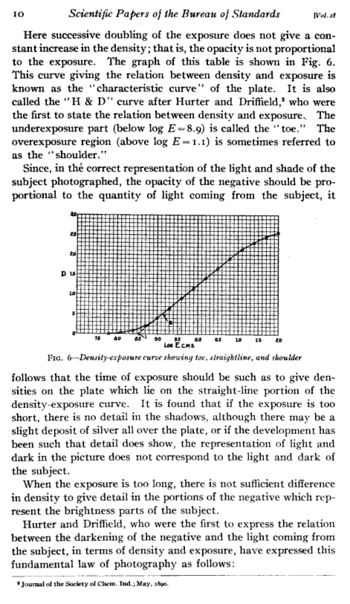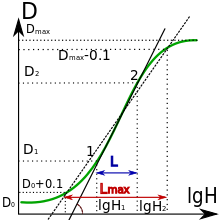
Back علم قياس الحساسية Arabic Sensitometria Catalan Sensitometrie German Sensitometría Spanish سانسیتومتری Persian Sensitométrie French Սենսիտոմետրիա Armenian Sensitometria Italian Сенситометрия Kazakh Sensytometria Polish


Sensitometry is the scientific study of light-sensitive materials, especially photographic film. The study has its origins in the work by Ferdinand Hurter and Vero Charles Driffield (circa 1876) with early black-and-white emulsions.[1][2] They determined how the density of silver produced varied with the amount of light received, and the method and time of development.
- ^ Hurter, Ferdinand & Driffield, Vero Charles (1890) Photochemical Investigations and a New Method of Determination of the Sensitiveness of Photographic Plates, J. Soc. Chem. Ind. May 31, 1890.
- ^ Mees, C. E. Kenneth (May 1954). "L. A. Jones and his Work on Photographic Sensitometry" (PDF). Image, Journal of Photography of George Eastman House. III (5). Rochester, N.Y.: International Museum of Photography at George Eastman House Inc.: 34–36. Archived from the original (PDF) on 20 July 2014. Retrieved 15 July 2014.